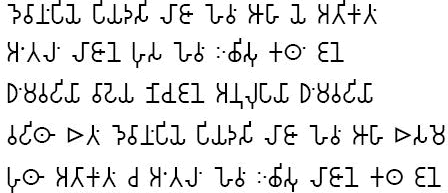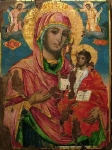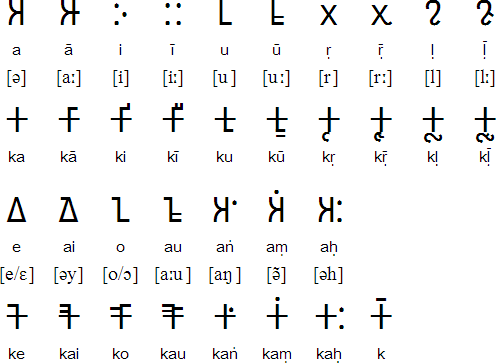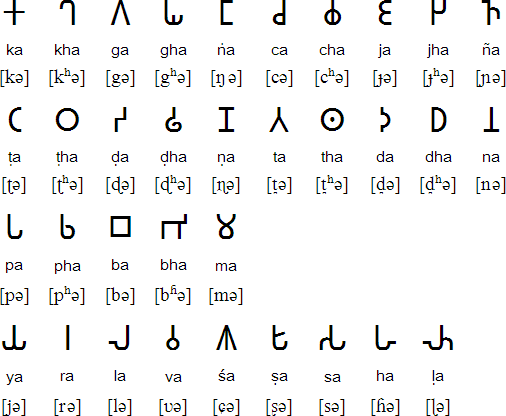
Азбуката Брахми е предшественик на повечето от около 40 съвременни индийски азбуки и на редица други азбуки, като кхмерската и тибетската. Смята се, че е моделирана на арамейската или финикийската азбука и се е появила в Индия някъде преди 500 г. пр.н.е. Друга теория е, че Brāhmī се е развил от писмеността на Инд или Харапа, която е била използвана в долината на Инд до около 2000 г. пр.н.е.
Най-ранните известни надписи на азбуката Брахми са тези на крал Асока (ок.270-232 г. пр. н. е.), трети монарх от династията Маурян.
Брахми е бил използван за писане на различни езици, включително самскрит и пракрит.
The Brāhmī alphabet is the ancestor of most of the 40 or so modern Indian alphabets, and of a number of other alphabets, such as Khmer and Tibetan. It is thought to have been modelled on the Aramaic or Phoenician alphabets, and appeared in India sometime before 500 BC. Another theory is that Brāhmī developed from the Indus or Harappa script, which was used in the Indus valley until about 2,000 BC.
The earliest known inscriptions in the Brāhmī alphabet are those of King Asoka (c.270-232 BC), third monarch of the Mauryan dynasty.
Brāhmī was used to write a variety of languages, including Sanskrit and Prakrit.
Notable features- Type of writing system: Abugida / Syllabic Alphabet - each letter represents a consonant with an inherent vowel. Other vowels were indicated using a variety of diacritics and separate letters.
- Writing direction: left to right in horizontal lines.
- Script family: Proto-Sinaitic, Phoenician, Aramaic, Brāhmī
- Letters are grouped according to the way they are pronounced.
- Many letters have more than one form.
- Writing direction: left to right in horizontal lines

Asokan Edict - Delhi Inscription
devānaṁpiye piyadasi lājā hevaṁ āhā ye atikaṁtaṁ
aṁtalaṁ lājāne husa hevaṁ ichisu kathaṁ jane
dhaṁmavaḍhiyā vāḍheya nocujane anulupāyā dhaṁmavaḍhiyā
vaḍhithā etaṁ devānaṁpiye piyadasi lājā hevaṁ āhā esame
huthā atākaṁtaṁ ca aṁtalaṁ hevaṁ ichisu lājāne katha jane
Thus spoke king Devanampiya Piyadasi: "Kings of the olden time have gone to heaven under these very desires. How then among mankind may religion (or growth in grace) be increased? Yea, through the conversion of the humbly-born shall religion increase"
Source: http://www.virtualvinodh.com/brahmi-lipitva/144-asokan-edict-delhi
Some modern descendants of BrāhmīBengali, Devanāgarī, Gujarāti, Gurmukhi, Kannada, Khmer, Malayalam, Odia, Sinhala, Tamil, Telugu, Tibetan
LinksInformation about Brāhmī
http://en.wikipedia.org/wiki/Br%C4%81hm%C4%AB_script
http://www.virtualvinodh.com/brahmi-lipitva
http://www.nibbanam.com/Brahmi/brahmi.htm
Brāhmī fonts
https://sites.google.com/site/brahmiscript/
The Edicts of King Asoka
http://www.cs.colostate.edu/~malaiya/ashoka.html
ALPHABETUM - a Unicode font specifically designed for ancient scripts, including classical & medieval Latin, ancient Greek, Etruscan, Oscan, Umbrian, Faliscan, Messapic, Picene, Iberian, Celtiberian, Gothic, Runic, Old & Middle English, Hebrew, Sanskrit, Old Nordic, Ogham, Kharosthi, Glagolitic, Old Cyrillic, Phoenician, Avestan, Ugaritic, Linear B, Anatolian scripts, Coptic, Cypriot, Brahmi, Old Persian cuneiform: http://guindo.pntic.mec.es/~jmag0042/alphabet.html
Some of the writing systems used to write Sanskrit Bhaiksuki, Brāhmi, Devanāgari, Galik, Grantha, Gupta, Kadamba, Kharosthi, Nandinagari, Sharda, Siddham, Thai, TibetanLearn The Brahmi Script | Ancient Indian Writing System (English)
https://www.youtube.com/watch?v=t8crd6uioSc
How Old is Written Sanskrit?
https://www.youtube.com/watch?v=ZCndkNCXqu8

2. бъди българин
3. geravna
4. zeravna
5. zeravna
6. virginia grotta
7. Виртуална библиотека
8. Къде сте
9. Песен за Нибелунгите
10. Войни на Тангра




